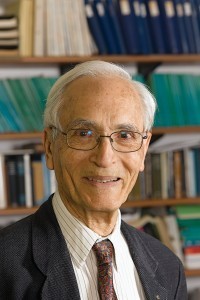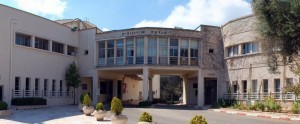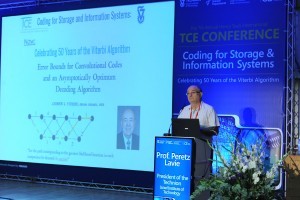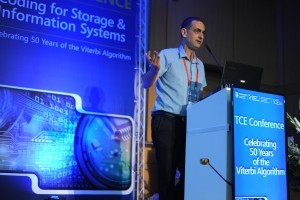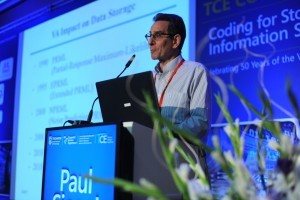Project Developed By Students from Technion’s Faculty of Mechanical Engineering Will Save Police Thousands of Shekels
An exercise system for the elderly, a mechanical piercing system for detonating explosive devices, and a press for attaching industrial gaskets are the winning projects in the annual Product Design Exhibition
An electromechanical piercing system for detonating explosive devices won first place last week at the Product Design Exhibition held by Technion’s Faculty of Mechanical Engineering. The system was developed for the Israel Police Bomb Squad by students Karin Ram, Oren Cohen, and Nimrod Keiddar, under the guidance of Avraham Greenblatt.
The lance system currently used by police to detonate explosive devices and suspicious objects uses expensive electronic bullets. The winning development, a piercing system for a lance, will allow system operators to use mechanical bullets, which are about 80% less expensive and more widely available. The improved system allows operators to choose between mechanical and remote operation.
“Using mechanical bullets will save the police a lot of money,” said Ram, “and we also managed to save a lot on the cost of the system.” Keiddar added, “We developed a cocking knob that activates a mechanical system and included many safety mechanisms.” Following a series of successful experiments, the new system is expected to be put to use in the near future. “The emphasis in the new system is on safety, and the students have saved the police thousands of shekels,” said Aviram Karovi, the police sapper who advised the students. “This is a development unlike any other in the world,” added sapper Noel Naor.
From Idea to Product
The Product Design Exhibition is held annually at the Faculty of Mechanical Engineering as part of the New Product Design course led by Dr. Hagay Bamberger under the guidance of Prof. Reuven Katz, who is the head of the Design, Manufacturing, and CAD track at the Faculty. Technion’s Senior Executive Vice President, Prof. Adam Shwartz, said, “Technion is working to promote the development of new ideas. Some of them remain in the form of theories, equations, and lines of code, but some are translated into real products. We are proud of both, but there is no doubt that when something that has been theoretical for years matures to the point of a product that benefits industry and society, it is especially exciting. Here, at the Product Design Exhibition, we see developments that are all beneficial, and we can say with certainty that each one is the best of its kind in the world.”
Students Dor Lavi, Dror Raff, and Denis Bakutin won second place in the design competition for the development of a tool gasket press for Iscar Ltd, under the guidance of Dubi Zuk. The press is designed to help insert a gasket into the designated borehole, which is a part of the manufacturing process of head adapters for milling machines. The advantage of the pneumatic press developed by the team lies in its easy operation and suitability for a variety of different adapters, which differ in size and shape.
Third place went to Tal Weisinger, Shahaf Meidler, and Noa Kohler, who developed an exercise system for wheelchair-bound seniors: a device that attaches to the wheelchair, enabling the user to strengthen his hands and upper body and improve his fine motor skills. According to the student developers, “Elderly people in wheelchairs often suffer from inactivity, among other things, which is sometimes characterized by muscular dystrophy. Exercise systems for the elderly exist but they are expensive, and therefore therapeutic institutions own one such system at most. We have developed an inexpensive, lightweight, and modifiable platform that provides various types of exercise. The idea is to use simple, lightweight, and completely mechanical devices – that is, not dependent on electricity.”
In the course, the team developed two exercise devices – a manual crank for strengthening the upper body and a fine motor skills table – but the idea is to develop a wide range of devices suitable for a wide range of needs and levels of activity. The project supervisor was Kfir Cohen and advice on geriatrics was provided by Prof. Zvi Dwaletsky, Head of the Geriatric Unit at the Rambam Health Care Campus.
Another unique development presented at the fair was a field stretcher developed by students Michael Ada and Roy Atinesh, under the guidance of Dr. Zvi Fruchter, for United Rescue of Israel (Ichud Hatzalah) and with the assistance of Segal Bikes Ltd. “The organization uses volunteers to provide first aid for medical emergencies until an ambulance arrives,” explained Ada. “On many terrains, such as bicycle paths, it is impossible to reach the injured person by car, or else the time required for evacuation is too great. Therefore, we were asked to develop a lightweight stretcher with a carrying mechanism that would make the task easier for medics and would also include a rigid surface to protect the injured person’s spine, for easy and quick evacuation to the means of transportation.”
“We developed a folding stretcher comprised of a surface with carrying beams with a roller attached to it,” added Atinesh. “We manufactured it from aluminum and it now weighs 14 kg. In a future development it will be manufactured from magnesium and its total weight will be about 11 kg, so two medics can carry it on their backs.”
Other developments in the competition were a system for injecting powder into a 3D printer, an underwater microscope illumination system, an electrode sharpening device, an aircraft bolt security diagnostics system, an automation system for assembling plastic parts, and rotational welding machine piping parts. All of these projects were requested by various industrial companies.
Photos: Sharon Tzur, Office of the Spokesperson, the Technion

